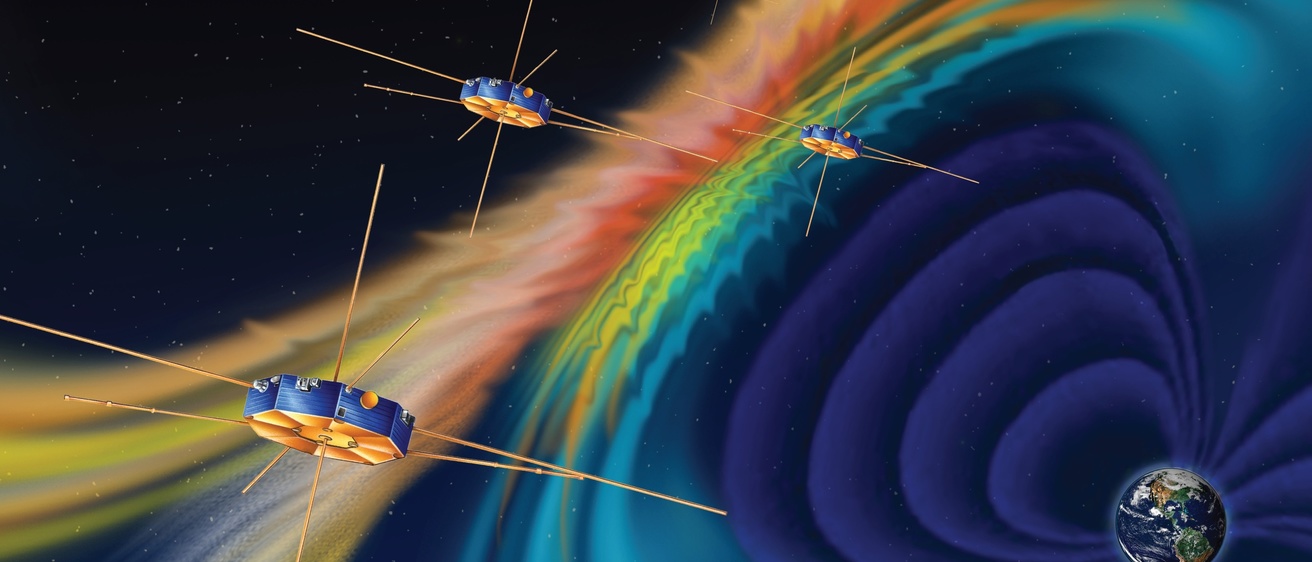
NASA has awarded Professor Greg Howes a $525,311 grant to study the plasma physics of magnetic reconnection in turbulent solar wind.
Violent events that occur in our solar system, such as massive solar flares that flood the upper atmosphere with x-rays and accelerate electrons to nearly the speed of light, are driven by poorly understood phenomena, such as magnetic reconnection. Magnetic reconnection is a plasma physics process by which stretched magnetic fields are broken and re-attached in a different configuration, enabling those newly oriented magnetic fields to snap back like a stretched rubber band. In that process, the energy of the magnetic field is converted into the energy of plasma flows and of high-energy particles. Similar magnetic reconnection processes proceed throughout the turbulent solar wind, including in regions near the Earth that can be directly sampled by spacecraft.
The Magnetospheric Multiscale (MMS) mission is a fleet of four spacecraft that orbit the Earth to probe the physics of magnetic reconnection in the solar wind. This NASA grant, “Identifying Particle Energization Mechanisms in Magnetic Reconnection through their Velocity-Space Signatures” supports the analysis of MMS observations using an innovative technique developed at the University of Iowa, the field-particle correlation technique. Using this technique, direct measurements of the electromagnetic fields and of the protons and electrons that constitute the solar wind plasma can be combined to learn how these particles are accelerated through the process of magnetic reconnection.
“Ultimately, this project aims to illuminate the detailed mechanisms at play in magnetic reconnection that leads to the heating of the solar wind plasma or the acceleration of particles to high energy, giving us a peek into the physics that governs intense events on the Sun such as massive solar flares,” Howes said.
